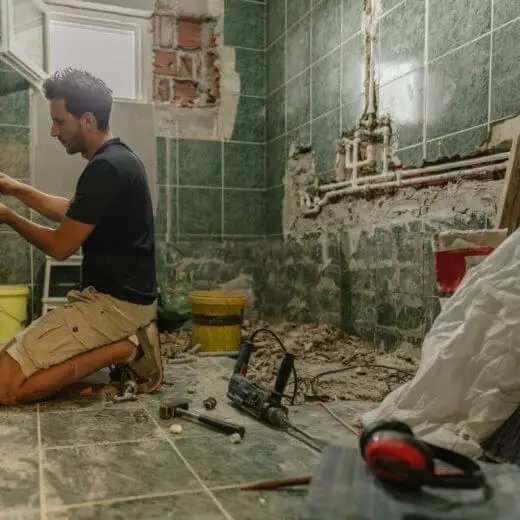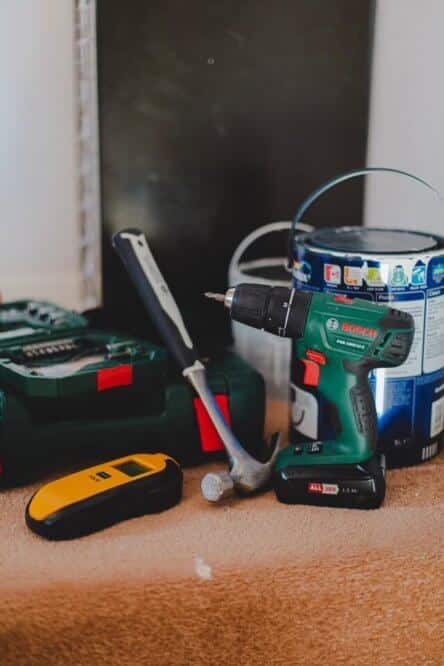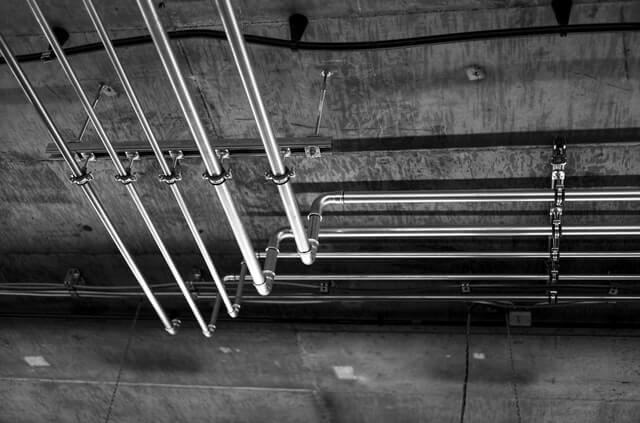Not once or twice have people bought a house built in the 1970s. Homes built during this era got built using cast iron pipes for their plumbing and sewage system. But how long do cast iron pipes last?
Those houses need their iron cast pipes removed or renovated since they last for 70 to 100 years.
How Long Do Cast Iron Pipes Last
Although this could be their lifespan, cast iron pipes tend to fail mostly after 25 years of service. You may need to replace them sooner before their lifespan ends. Modern houses don’t use cast iron pipes anymore due to their costly installation and replacement. They also tend to experience more faults than their cheaper counterparts- the PVC pipes.
If your house got fitted with cast iron pipes, you should conduct a routine pipe inspection once you complete the 25 years. It will be normal for the pipes to deteriorate after this period. Conducting regular inspections will keep you at the forefront of any plumbing issue that may result.
Does insurance cover cast iron pipes?

Insurance helps take care of the problems that may arise in your property. It will be a great thing if you have house insurance that will cover your cast iron repair. Most construction companies have stopped using cast iron pipes since the 1980s, and some insurance companies may not cover cast iron pipe systems. Some of the reasons cast iron pipes may no longer get used in most projects include the following.
Cast iron pipes get prone to rusting
Rusting also referred to as corrosion, may affect your cast iron pipes. Rusting occurs when the pipes get exposed to foreign material, especially underground pipes. The soil contains toxins, electric currents, and acids that contribute to external rusting.
This process may also repeat itself inside the pipes if these agents find themselves inside the pipe. Rusting also results from sulfuric acid that forms from sewage running through these pipes. Rusting interferes with the water quality and the lifespan of the pipes.
Cast iron pipes decay
Did you know that your cast iron pipes may decay and disintegrate? For instance, the cast iron pipes get placed underground for sewer connections.
The sulfuric acid due to gas-build up in these pipes reacts with the pipes to cause rusting, making the pipes weak. Other external and internal toxins react further with the pipes, and the overall outcome may be pipe decay.
Discoloration of the cast iron pipes
After being exposed to all these agents, cast iron pipe discolors, leading to its deterioration. The color may change with the progression of rust. What this means, the water supply in your house may be affected too, and it may render the water you use for your daily routines unsafe. Rusting itself may pose a health threat to those who come into contact with the rust.
If your insurance coverage doesn’t accept to cover damages to your cast iron pipes, as most might decline, you may claim for repair or replacement via your attorney.
How to tell if your house has cast iron pipes

Sometimes, we purchase a house without prior knowledge of its cast iron pipes for its water supply and sewage system. However, this information proves very important for house owners. If you understand the pipes in your house and how old they might be, you will avoid the disappointment of failed sewer pipes.
If you need to know if your house got fitted with cast iron pipes, look out for the following signs in your plumbing and sewage system.
- You open your pipes and discover brown water run out first before it clears out. If you often see brown water coming out of your taps, it serves as an indication that your house has cast iron pipes. This brown water comes from rusting that tends to occur in cast iron pipes. When sulfuric acid forms in these pipes, it slowly corrodes the pipes, and you will often see brown water coming from the taps, especially in the morning.
- If you notice rusty bulging pipe areas at distinct hidden places, it means your house got cast iron pipes. Mostly, cast iron pipes get installed to drain water, and rarely for pressurized water supply. Therefore, you will notice rusty-looking pipes at the laundry area, attic vent pipe, or where a pluming fixture has gotten exposed. These places will be proof that your house has cast iron pipes, and you might talk about that before purchasing it. Some housing companies go-ahead to replace these cast iron pipes with PVC pipes for a better water supply service.
- Rusty sewage leaks. Do your sewage pipes leak with a brownish discharge forming around the leak area? If so, your house has cast iron pipes sewage line. When the pipes leak, it means that rust has eaten them up completely, and your sewage line system might be falling apart. You will need your cast iron pipes replaced immediately.
- Subject your pipes to a spark test. It will be easy if you need to tell if your pipes were cast iron pipes and you have a grinding wheel with you. According to the spark test procedure, passing the wheel on a cast iron pipe will produce bright yellow sparks. Steel pipes will give red to orange color sparks. This test will be important if you recycle the old pipes and replace them with better sewer or water pipes. [1]
Should I buy a house with cast iron pipes?
Cast iron pipes have many disadvantages. Over the years, advancements in the plumbing sector have provided better choice pipes. You don’t have to buy a house with old cast iron pipes anymore. If your house insurance company doesn’t guarantee a replacement of these pipes, then you might find cheaper replacement options in the market. There are better options, especially the plastic pipes. Most pipes like the PEX don’t even burst during winter due to freezing conditions, according to an Illinois study. [2]
So, buying a non cast iron piped house will be better than cast iron pipes.
What are the disadvantages of buying a house with cast iron pipes?

- Freezing may affect cast iron pipes more than plastic pipes. Since cast iron pipes come made of metal, freezing temperatures may freeze out the water or sewage running through during winter. This condition might result in sewage blockages which might be a nightmare for the house owner.
- Rusting damages the pipes and leads to brown water when water comes into contact with the pipes. Rusty water may pose health issues to people when you drink or shower with it. You may start experiencing stomachache or skin conditions from exposure to rusty water.
- Replacing cast iron pipes might be expensive. Cast iron pipes proof costly to buy and install. Maintaining them may be costly too. Now that most people no longer use them, they may be more expensive.
- Some skin conditions like Eczema result from exposure to leakages and rusty water from cast iron pipes. [3]
How to tell if the cast iron pipe is bad
Cast iron pipes get distorted slowly. After 25 years of being in your house, you may start noticing some things to show that they have gone bad. If you see some of the following changes, it could be all you need to know is that all is not well.
- Slow drainage may serve as an indication of bad cast iron pipes. When these pipes become blocked, especially during winter, it may be hard for water and sewage to pass through. If sulfuric acid destroys the pipes, foreign material may also go in the pipes through weakened parts. This way, blockages may occur, and you experience slow drainage.
- Wet spots in the house. A damaged pipe will often lead to leakages. If you have noticed various wet spots around the house, your cast iron pipes may be bad and leaking.
- Rusty/brown water in taps. This brown water indicates rusting inside your iron cast pipes. Prolonged rusting signify bad pipes since the water will not be safe for daily household use, and it will further lead to leakages when these rusty regions get weak.
- Bad odor and molds. If sewage leaks out, it will lead to a bad smell in the house. When wet spots go unnoticed for some time, molds begin to form, and the quality of your home begins to go down.
Final Thought
Cast iron pipes may last for up to 100 years. The disadvantages of cast iron pipes may be many, and replacing them with plastic pipes may offer a better option. If your house got built in the 1970s, it could contain cast iron pipes and may be due for repair. Other piping options may prove better than cast iron pipes if you need to build a home now.
Frequently Asked Questions
- What is the life expectancy of cast iron pipes?
Cast iron pipes may last for 80 to 100 years in areas that don’t experience winter. These pipes may last for 25 years in advanced climate areas and may start failing.
- Do cast iron pipes need to be replaced?
Like all plumbing products, cast iron pipes will require replacement once they go bad. Occurrences like blockages and leaks could indicate the need to replace your cast iron pipes.
- Should I replace cast iron sewer with PVC?
Yes. Replacing your cast iron sewer system with PVC will be a great idea. PVC pipes have a long life and offer cheaper replacement options.

Michael Davis is a heating & plumbing expert who currently works as independent contractor in SC. He also writes for Plumbertip.
For almost 10 years he worked on various plumbing tasks across South Carolina.


